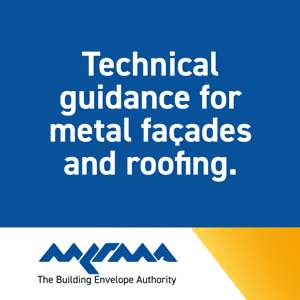How architects are insulating Passivhaus buildings
- Specify & Build
- May 2
- 4 min read
A fabric-first approach to building is the core of the Passivhaus standard. Here, we explore the fundamentals of Passivhaus insulation and how some architects have achieved this in their own projects.
Passivhaus is an energy performance standard used to achieve thermal comfort solely by post-heating or post-cooling of the air, removing the need for traditional space heating systems such as gas boilers. Crucially, it sets a standard for the maximum required heating load from heat pumps or mechanical ventilation with heat recovery (MVHR) and this requires a highly efficient, airtight building fabric with minimal thermal bridging.
For a building to be considered Passivhaus, it must meet four criteria. Firstly, the Space Heating Energy Demand cannot exceed 15kWh per square meter of living space per year. Second, the total energy used for all domestic appliances must not exceed 60kWh per square meter per year. Airtightness must be no more than 0.6 air changes per hour at 50Pascals pressure and, finally, thermal comfort must be met in all living areas.
These requirements can be met by following five principles – highly efficient thermal insulation, well-insulated windows that use low-e glazing to prevent heat transfer, ventilation heat recovery, airtightness and minimal thermal bridges.

Insulating the building fabric
A Passivhaus building requires very high levels of thermal insulation. For comparison, Approved Document L of the Building Regulations asks that walls achieve a maximum U-value of 0.26 W/m2K, whereas Passivhaus buildings typically have a U-value lower than 0.15 W/m2K.
One approach is to use glass mineral wool, as HEM Architects did on Sort Trae, a Passivhaus designed by a retired architect as her own dream home and workshop. Knauf Insulation’s FrameTherm Slab 32 was friction-fitted within the 140mm thick timber frame walls on the first floor for a calculated U-value of 0.14 W/m2K, while DriTherm Cavity Slab 32 was used to fill the stone-clad masonry cavity walls on the ground floor to get a U-value of 0.14W/m2K.
“We try to specify fully filled masonry cavity walls where possible, sometimes up to 200mm wide, to maximise the use of mineral wool insulation. It pays dividends for the client,” explains Liam Seaman, Architectural Technologist for HEM Architects.
Airtightness and thermal bridging
Airtightness is one of the most crucial aspects of a Passivhaus build. Air leakage is a significant contributor to heat loss, poor air quality, drafts and sound pollution. An airtight fabric improves occupant comfort and ensures low and zero-carbon technologies such as MVHR and heat pumps can run efficiently.
Insulation that’s fitted correctly plays a critical role in airtightness, but some materials are easier to achieve this with than others. For example, rigid boards can be difficult to install without air gaps as they require precise cutting and taping. Due to construction tolerances, minor imperfections in the substrate, and the natural movement of the construction over time, it can be very difficult to achieve and maintain a flush fit with these boards, even if they notionally offer the required performance.
VESP Architects have found over the years that using mineral wool makes it easier to achieve the required thermal performance and airtightness levels needed for Passivhaus construction. Although not strictly built to the Passivhaus standard, Labrador House is a high-performing home with wall U-values of 0.15W/m2K, achieved using Knauf Insulation’s Rocksilk RS45.
To achieve an airtight and efficient thermal envelope, the timber-clad sections of the house used 175mm slabs of Rocksilk RS45, a rock mineral wool product, fitted between the studs of the steel frame system. The total U-value for the timber-clad walls was 0.15W/m2K.
One the biggest factors in the specification of Rocksilk RS45 was the installation process. Director Ian Phillips explains: “We now specify mineral wool for any full-fill insulation we need. The fact is that rigid boards such as PIR perform well on paper but are not quality control friendly. The boards don’t sit as closely to the timber as they need to. Mineral wool can be pushed into a space and fills it so easily.”

Thermal bridging
Mitigating thermal bridging is another key tenant of Passivhaus. Heat follows the path of least resistance when moving by conduction from the heated building space to the outside – a thermal bridge is a localised area of increased heat flow. Thermal bridges can cause increased heat loss and decreased surface temperatures, which can lead to condensation that penetrates building elements causing mould and rot.
A building can be considered ‘free’ of thermal bridges if the total heat loss, including from potential thermal bridges, isn’t greater than what would be expected by calculating the heat loss of the whole building based on its U-values. Another practical way of defining ‘thermal bridge free’ design is to check if one can use a pencil to outline the exterior insulation envelope on a sectional drawing, without breaking the line.
Simply changing the configuration of a system can make a substantial difference. For example, while working on Wednesfield Technology Primary School in Wolverhampton, offsite specialists Timber Innovations used a twin stud configuration of its Larsen Wall system to reduce thermal bridging. The panels were insulated with Knauf Insulation’s glass blowing wool Supafil Frame.
“A blown-in material ensured we consistently filled all the voids in each panel, providing the required thermal performance and ensuring there would be no cold spots in the finished walls,” says David Himmons, Managing Director at Timber Innovations.
Passivhaus homes
Designing and building to the Passivhaus standard not only improves occupant comfort but also contributes to energy efficiency and sustainability. As more architects and builders adopt these practices, Passivhaus principles will play an increasingly important role in low-carbon housing.
.png)























































.png)

